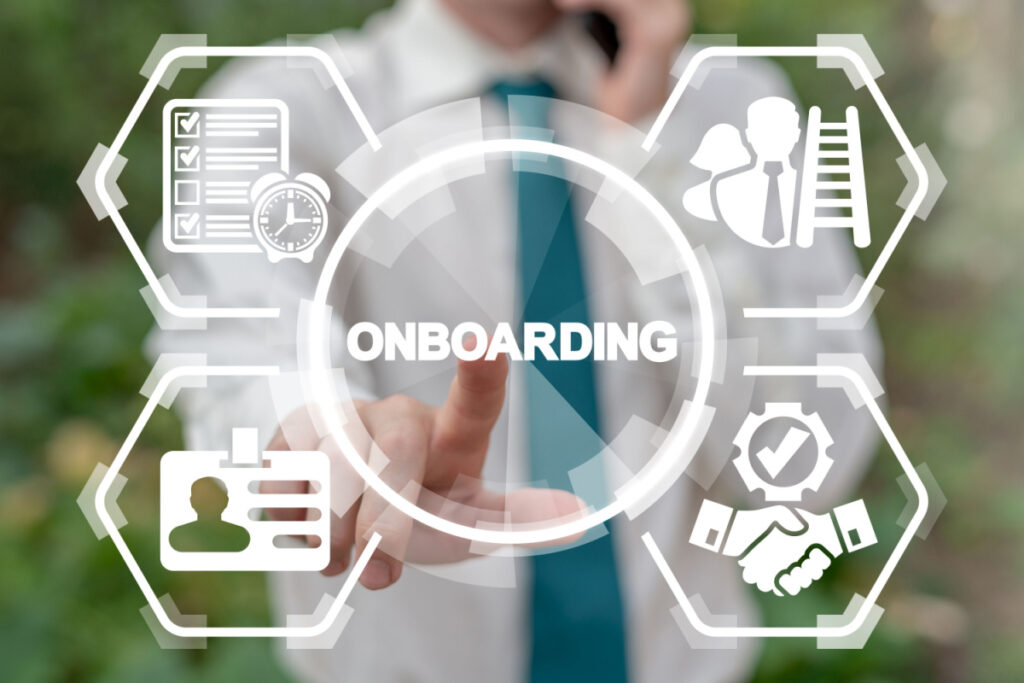Tips for Onboarding New Employees
|

An employee’s first day at the office is a pretty big day, for everyone involved. The company has invested a lot of time, energy, and money into finding this employee, and wants to get her off to the right start. The employee, on the other hand, is jumping headfirst into a new culture and environment, and is eager to prove herself and start adding value to her new employer.
Hopefully, it’s the start of a mutually-beneficial relationship. But how you handle that first day could determine whether your new employee is able to hit the ground running, or if she’ll stumble with a rocky start. If the onboarding process is bad enough, your new employee may even start thinking that this job choice was a mistake; that turnover could prove very costly to you.
Here are some of our best onboarding tips for setting everyone up for success.
Be prepared.
One thing’s for sure, you definitely don’t want your new employee sitting around twiddling his thumbs while you scramble to pull together an employee handbook, a tax form, and a mouse for his computer. Be prepared! Have copies (printed and digital) of all necessary forms, and anticipate questions your employee might have about filling them out. Have any internal training documents (like a handbook or policy sheet) ready to go as well. Make sure you’ve created a space for the new arrival, with all the right equipment accounted for, and an Internet connection ready to go. And be sure to set them up with whatever logins they’ll need to access company information. This level of preparation won’t only keep things running smoothly, but they’ll show your employee that you were as ready for him as he was for you.
Make introductions.
Don’t introduce your new employee to “the team” and call it good. Make individual introductions, taking care to point out who the employee will be working with directly. Make a big deal out of her first day: announce it in your morning meeting, take everyone out to lunch, or set up a happy hour get together after work. Give her plenty of opportunity to start building relationships with the rest of your workforce.
Be (super) clear.
If you don’t want your employee to leave his first day feeling confused and overwhelmed, then you need to be abundantly clear with him, right from the start. What company policies does he need to be aware of? What are his primary responsibilities? Who does he report to? Who should he ask when he has questions? Knowing things like this will help an employee feel empowered, rather than lost. You could even consider assigning a mentor to your new employees, so they don’t have to worry about bugging multiple people with questions or concerns.
Give a tour.
Remember, your new employee doesn’t know her way around the office yet. Take a few minutes to give her a thorough tour. Think: break room, restrooms, conference room, copy room, mail room, and so on. She’ll be grateful that you took the time to show her around.
Check in regularly.
Onboarding isn’t necessarily something that’s “done” after day one. You’ll want to check in regularly with your new employee and ask him how he’s doing and what questions he has for you. This will help him feel valued, rather than like just another number that is being pushed through the system.
A good rule of thumb underlying your onboarding process is this: treat your new employee the way you would want to be treated on your first day. Set your new employees up for social, professional, and personal success on their first day, and you’ll be well on your way to a strong relationship that will benefit everyone involved.
For help finding the right IT, EDI, or Healthcare/Admin talent, contact EDI Staffing. Our experienced team can help bring you qualified talent to meet your specific needs and simplify the overall hiring process, saving you time and energy.
Leave a Reply


